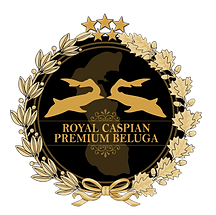
The word caviar originates from the Turkish khavyar, first appearing in English print in 1591. Dating back 250 million years to prehistoric times, the sturgeon has been a part of the Middle Eastern and Eastern Europe diet for the majority of man's history.
Caviar was once reserved strictly for royalty. Yet surprisingly enough, in America during the early nineteenth century, caviar was routinely served during free lunches in saloons. The salty flavor encouraged thirst and enhanced Beer sales. At that time, America's waters were abundant with sturgeon, a resource that German immigrant Henry Schacht took advantage of in 1873 when he set up a business exporting caviar to Europe for the seemingly high price of one dollar per pound. Other entrepreneurs soon followed, and by the end of the nineteenth century, the US was the largest exporter of caviar in the world. During this caviar boom, much of the harvest shipped to Europe was imported right back to the USA again, labeled as the more coveted "Russian caviar."
The four main types of caviar are Beluga, Sterlet, Ossetra, and Sevruga. The rarest and costliest is from beluga sturgeon that swim in the Caspian Sea, which is bordered by Iran, Kazakhstan, Russia, Turkmenistan, and Azerbaijan.
Beluga caviar is prized for its soft, extremely large (pea-size) eggs. It can range in color from pale silver-gray to black.
Ecology
Over-fishing, smuggling and pollution caused by sewage entry into the Caspian Sea have considerably reduced the sea's sturgeon population.
In September 2005, the United States Fish and Wildlife Service banned the import of Caspian Sea Beluga caviar to protect the endangered Beluga sturgeon; a month later, the ban was extended to include Beluga caviar from the entire Black Sea basin. In January 2006, the Convention on the International Trade in Endangered Species of Wild Flora and Fauna (CITES) supported an international embargo on caviar export.[28] In January 2007, this ban was partly lifted, allowing the sale of 96 tons of caviar, 15% below the official 2005 level.[29] In July 2010, Russia and some other CIS countries restarted the export of caviar.[30] The 2010 quotas allow for the export of three tons of beluga, 17 tons of sevruga and 27 tons of osetra.[30] In September 2010, Kazakhstan launched a state monopoly brand, Zhaik Balyk, from the Kazakh word for the Ural River. Under the CITES agreement, Kazakhstan was granted the right to produce 13 out of the 80 tons allowed up until February 28, 2011.
Extraction
Commercial caviar production historically involved stunning the fish and extracting the ovaries. Another method is extracting the caviar surgically (C section) which allows the females to continue producing roe but this method is very painful and stressful for the fish[dubious – discuss][citation needed] and is illegal in some countries. Other farmers use a process called "stripping", which extracts the caviar from the fish without surgical intervention. A small incision is made along the urogenital muscle when the fish is deemed to be ready to be processed. An ultrasound is used to determine the correct timing. This is the most humane approach towards fish that is presently available but not all farmers use it due to the lack of knowledge in this field.
Caviar preparation
Preparation follows a logical sequence that has not really evolved over the last century. First ovaries are removed from the sedated female sturgeon and passed through a sieve to remove the membrane. Freed roes are rinsed to wash away impurities. Roes are now ready to become caviar by adding a precise amount of salt for taste and conservation. The fresh preparation is tasted and graded according to quality. Finally, the golden eggs are packed into lacquer lined tins that will be further processed or sold directly to customers.


